10 Best Maintenance Scheduling Software
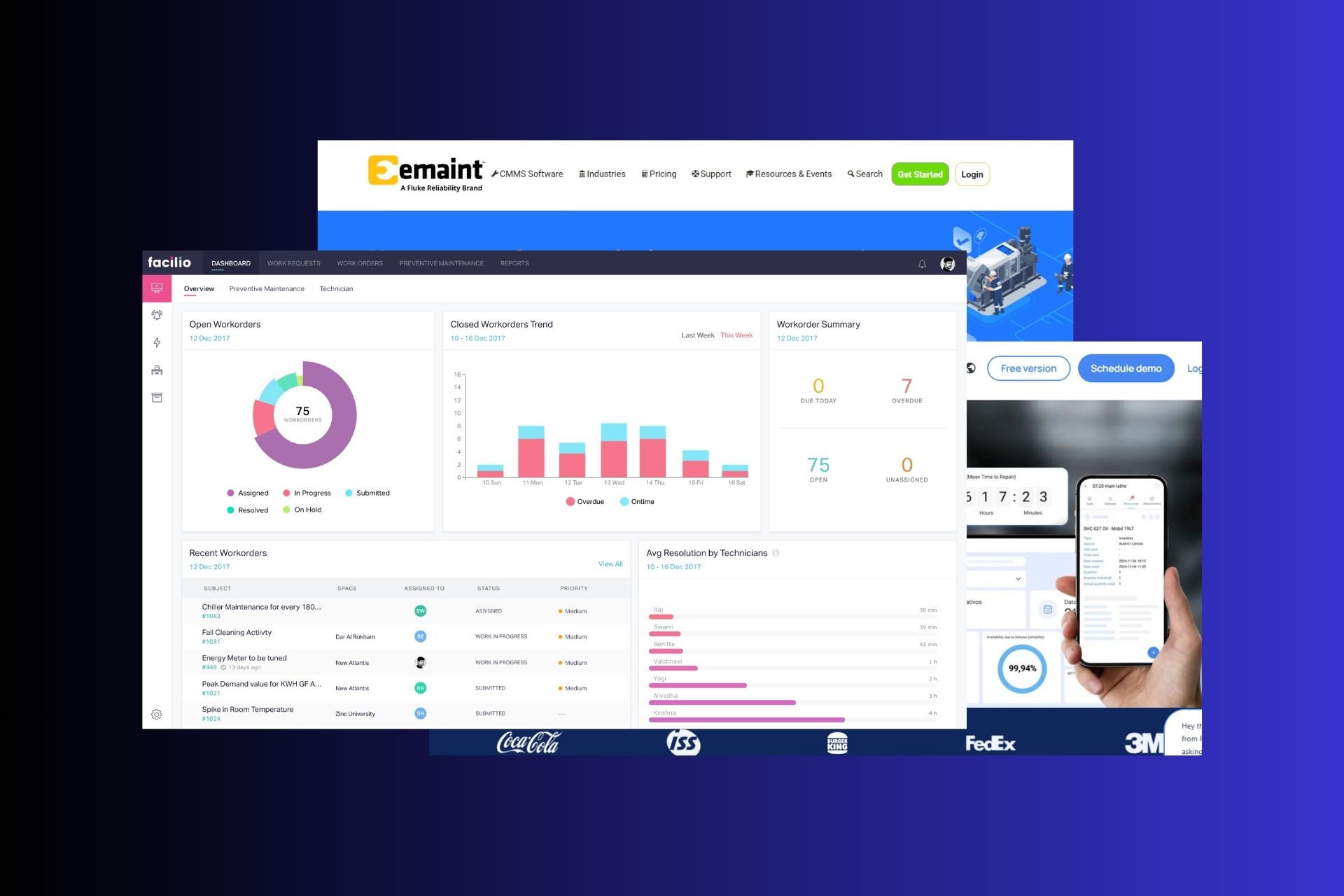
Maintenance scheduling software addresses these issues by providing a centralized platform to manage maintenance tasks, track assets, and optimize resource allocation. This software is essential for organizations seeking to improve operational efficiency and reduce maintenance costs. For a broader view of the market, see our guide to the best CMMS software programs.
Why is Maintenance Scheduling Software Needed?
Many organizations still rely on outdated methods like spreadsheets or manual tracking for maintenance tasks, leading to inefficiencies and increased risks. Reactive maintenance, addressing problems only when they arise, often results in costly repairs and extended downtime. This can significantly impact productivity and profitability.
- Lack of Visibility: Without a centralized system, it’s difficult to track the status of maintenance tasks, leading to confusion and delays.
- Inefficient Resource Allocation: Manually assigning technicians and resources can result in underutilization or overbooking, impacting productivity.
- Poor Communication: Lack of clear communication between departments can lead to missed deadlines and duplicated efforts.
- Inadequate Record Keeping: Relying on paper-based records makes it challenging to track maintenance history and identify trends.
- Increased Downtime: Reactive maintenance and poor planning result in more frequent equipment breakdowns and extended periods of inactivity.
Maintenance scheduling software addresses these challenges by providing a centralized platform for managing all aspects of the maintenance process. By automating scheduling, tracking, and reporting, these solutions improve efficiency, reduce costs, and minimize downtime, ensuring smooth operations and increased profitability.
Key Features to Look For
When selecting maintenance scheduling software, consider the following key features to ensure it meets your organization’s specific needs:
Preventive Maintenance Scheduling: Automates the scheduling of routine maintenance tasks based on time, usage, or other predefined triggers. This ensures that equipment receives regular maintenance, reducing the risk of breakdowns and extending its lifespan.
Work Order Management: Streamlines the creation, assignment, and tracking of work orders. Technicians can receive assignments electronically, update progress in real-time, and attach relevant documentation, improving communication and efficiency.
Asset Management: Provides a centralized repository for tracking asset information, including maintenance history, warranty details, and location. This allows organizations to monitor asset performance, identify potential issues, and make informed decisions about replacements.
Inventory Management: Tracks the availability of spare parts and supplies, ensuring that technicians have the necessary resources to complete maintenance tasks. This minimizes delays and reduces the risk of stockouts.
Reporting and Analytics: Generates reports on key maintenance metrics, such as downtime, maintenance costs, and technician productivity. This data helps organizations identify areas for improvement and optimize their maintenance strategies.
Benefits
Implementing maintenance scheduling software offers a range of benefits, leading to improved efficiency, reduced costs, and increased productivity.
Reduced Downtime: By automating preventive maintenance scheduling and streamlining work order management, these solutions minimize equipment breakdowns and reduce downtime, ensuring continuous operations.
Improved Efficiency: Automating tasks like scheduling, tracking, and reporting frees up technicians to focus on core maintenance activities, improving overall efficiency and productivity.
Lower Maintenance Costs: By preventing breakdowns and extending equipment lifespan, maintenance scheduling software reduces the need for costly repairs and replacements, lowering overall maintenance costs.
Better Resource Allocation: Optimizing the allocation of technicians and resources ensures that maintenance tasks are completed efficiently and effectively, maximizing productivity and minimizing wasted time.
Enhanced Compliance: Tracking maintenance activities and generating reports helps organizations comply with industry regulations and safety standards, reducing the risk of penalties and fines. For highly regulated industries like healthcare, pairing your CMMS with secure records management tools such as those in our best free EMR software list can further improve compliance.
What Are the Top Maintenance Scheduling Solutions?
Limble CMMS – Best for Mobile Accessibility
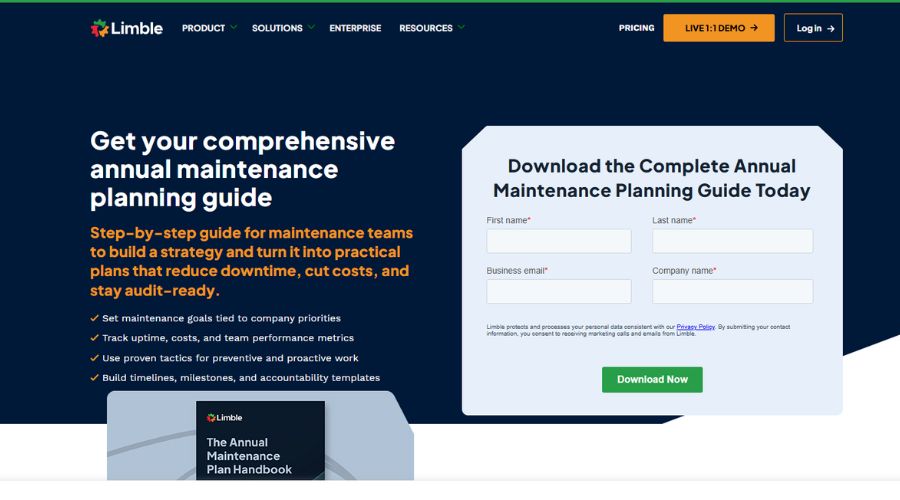
Limble CMMS is a cloud-based maintenance management solution known for its user-friendly interface and robust mobile capabilities. It’s designed to streamline maintenance operations for businesses of all sizes, particularly those with field technicians. Limble emphasizes ease of use and accessibility, making it a strong choice for organizations looking to quickly implement a CMMS solution. Landscapers and mobile service providers may also find overlap with tools in our best lawn care software list.
UpKeep – Best for User-Friendly Interface
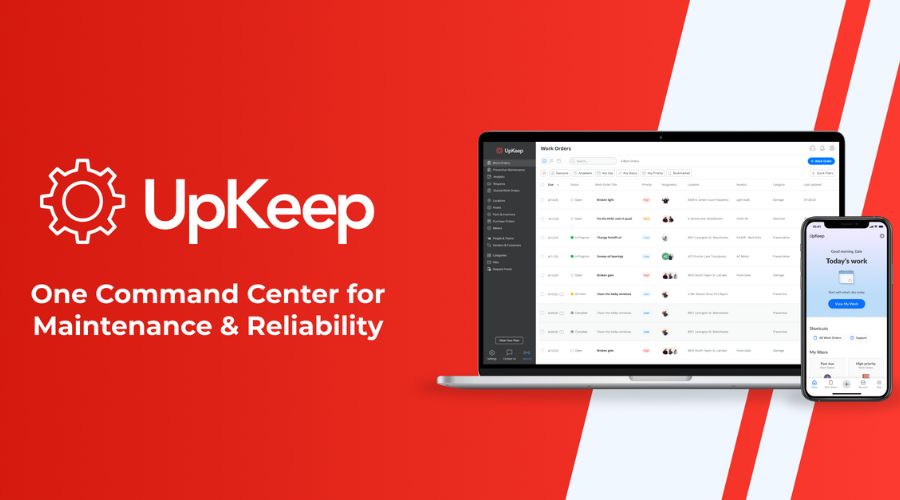
UpKeep is a mobile-first CMMS platform designed to simplify maintenance management for businesses of all sizes. Its intuitive interface and focus on mobile accessibility make it a popular choice for organizations looking to improve communication and streamline workflows. UpKeep aims to empower maintenance teams with the tools they need to be more efficient and productive.
Fiix CMMS – Best for Advanced Analytics
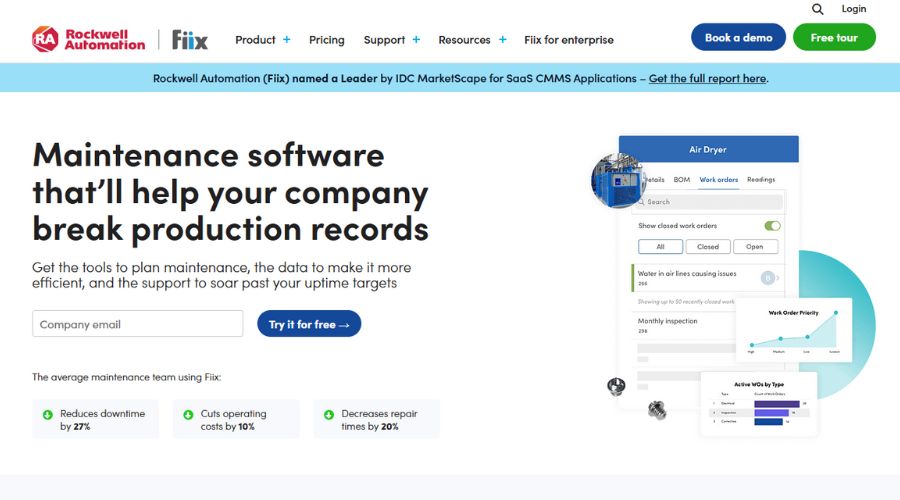
Fiix CMMS is a comprehensive maintenance management platform designed to help organizations optimize their maintenance operations and improve asset performance. It offers a wide range of features, including work order management, preventive maintenance scheduling, asset management, and advanced analytics. Fiix CMMS aims to provide businesses with the tools they need to make data-driven decisions and improve their bottom line.
Hippo CMMS – Best for Small to Medium-Sized Businesses
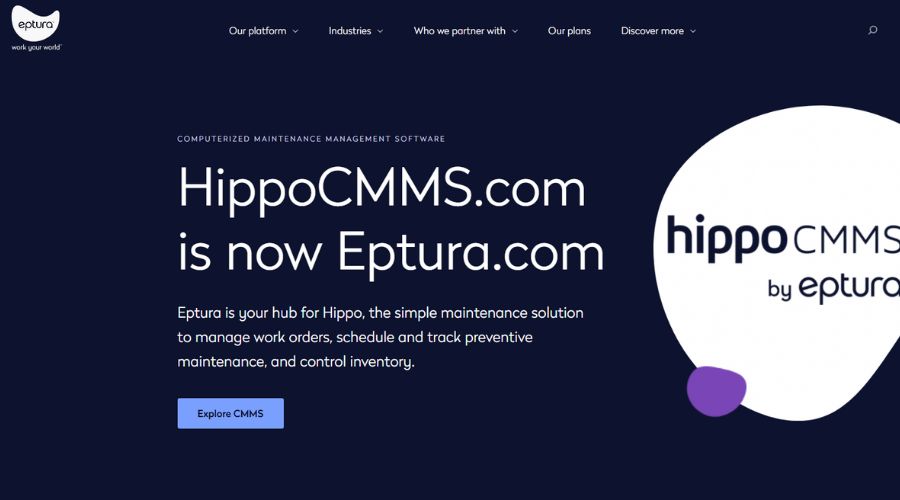
Hippo CMMS is a user-friendly, web-based maintenance management solution designed for small to medium-sized businesses. It offers a balance of essential features and affordability, making it a popular choice for organizations looking to streamline their maintenance operations without breaking the bank. Hippo CMMS aims to simplify maintenance management and improve asset reliability.
Maintenance Connection – Best for Enterprise-Level Organizations

Maintenance Connection is a robust, enterprise-grade CMMS platform designed to meet the complex needs of large organizations. It offers a comprehensive suite of features, including work order management, preventive maintenance scheduling, asset management, inventory management, and advanced reporting. Maintenance Connection aims to provide businesses with the tools they need to optimize their maintenance operations and improve asset performance across multiple locations.
eMaint CMMS – Best for Regulatory Compliance
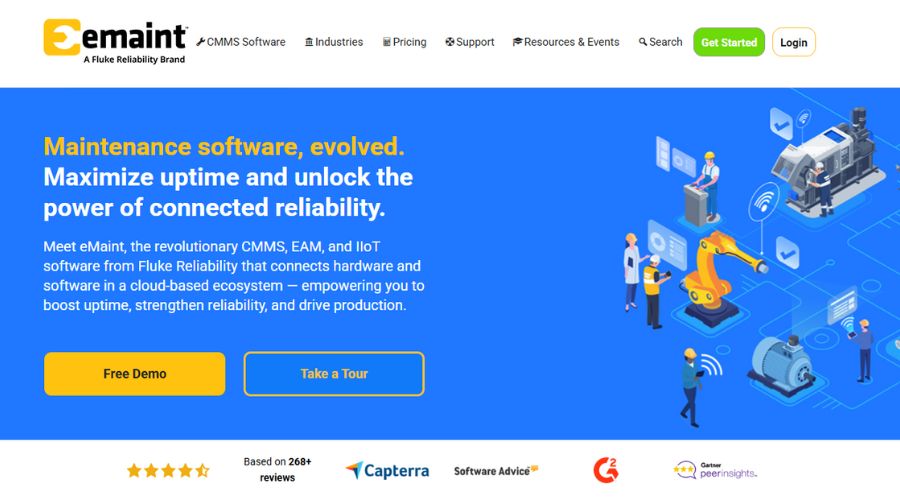
eMaint CMMS is a cloud-based maintenance management solution designed to help organizations streamline their maintenance operations and comply with industry regulations. It offers a comprehensive suite of features, including work order management, preventive maintenance scheduling, asset management, inventory management, and reporting. eMaint CMMS aims to provide businesses with the tools they need to improve efficiency, reduce costs, and ensure compliance.
Fracttal One – Best for IoT Integration

Fracttal One is a cloud-based CMMS that emphasizes the integration of IoT (Internet of Things) devices for proactive maintenance. It aims to leverage real-time data from connected equipment to predict failures, optimize maintenance schedules, and improve overall asset performance. Fracttal One positions itself as a forward-thinking solution for businesses embracing Industry 4.0.
ServiceTrade – Best for Field Service Management
ServiceTrade is a cloud-based field service management software designed to streamline operations for commercial service contractors. While it includes maintenance scheduling capabilities, its focus extends beyond internal maintenance to encompass the entire field service lifecycle, from lead generation to invoicing. Contractors in HVAC, fire safety, or landscaping may also want to explore complementary tools like those in our best lawn care software guide.
Facilio – Best for Building Automation

Facilio is a unified facilities management platform that leverages data and automation to optimize building performance and enhance operational efficiency. It’s designed for commercial real estate owners, operators, and service providers who want to improve building performance, reduce costs, and enhance the tenant experience. For property owners, it pairs well with software highlighted in our property management software for landlords guide.
Maintenance Scheduling Software Best Practices
To maximize the benefits of maintenance scheduling software, follow these best practices:
Maintain Data Quality: Ensure that asset data, maintenance schedules, and other information in the software is accurate and up-to-date. To prevent data loss, back up records regularly using one of the best backup software tools.



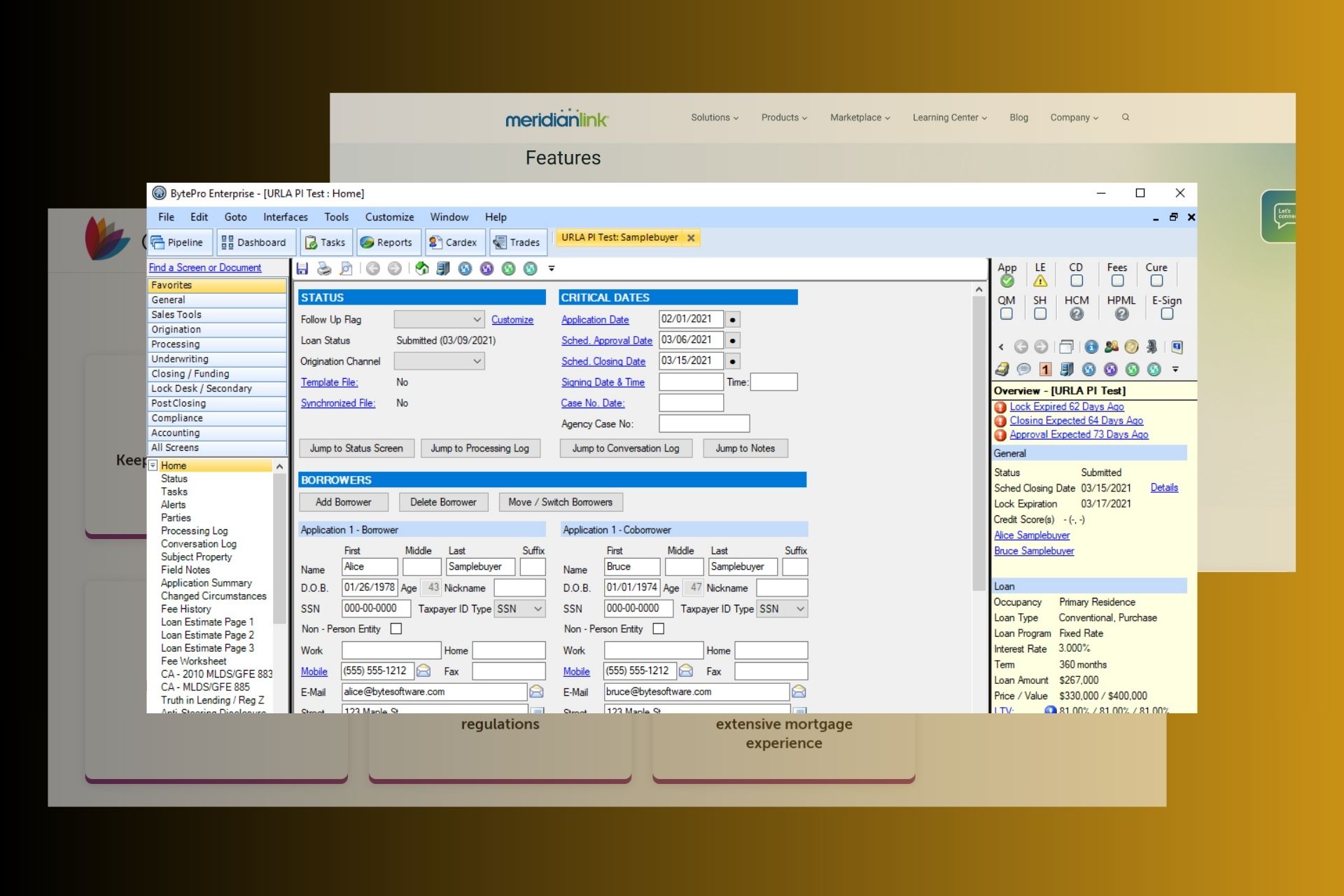

User forum
0 messages